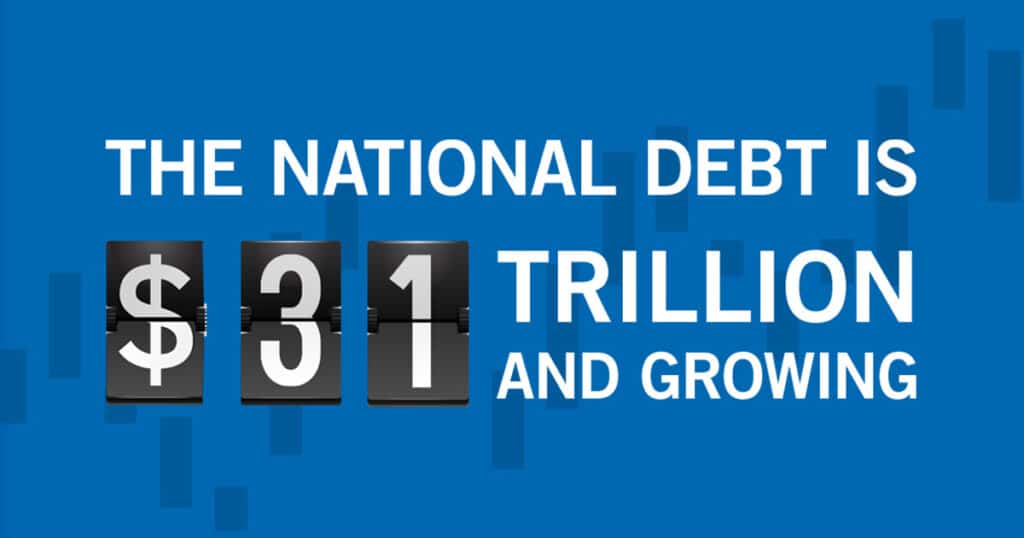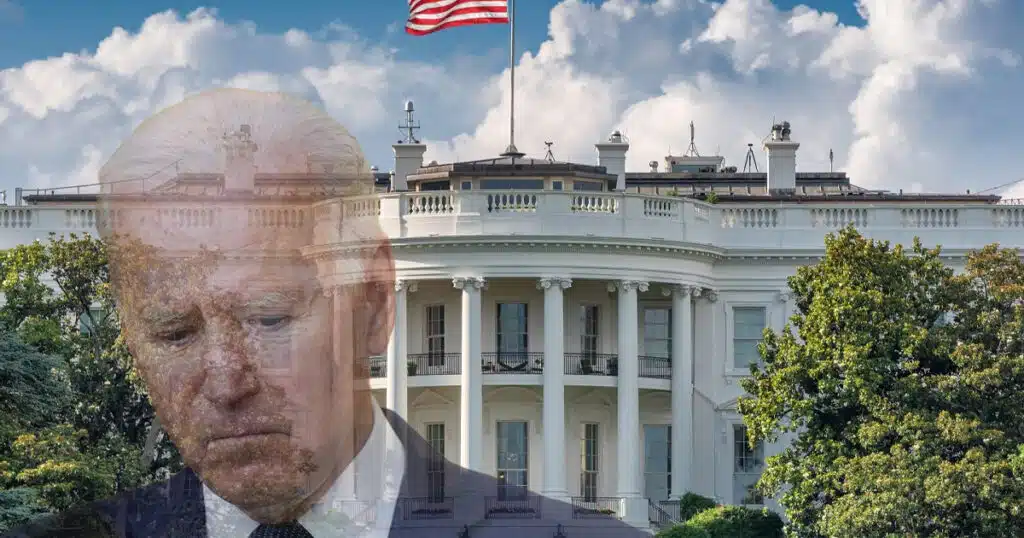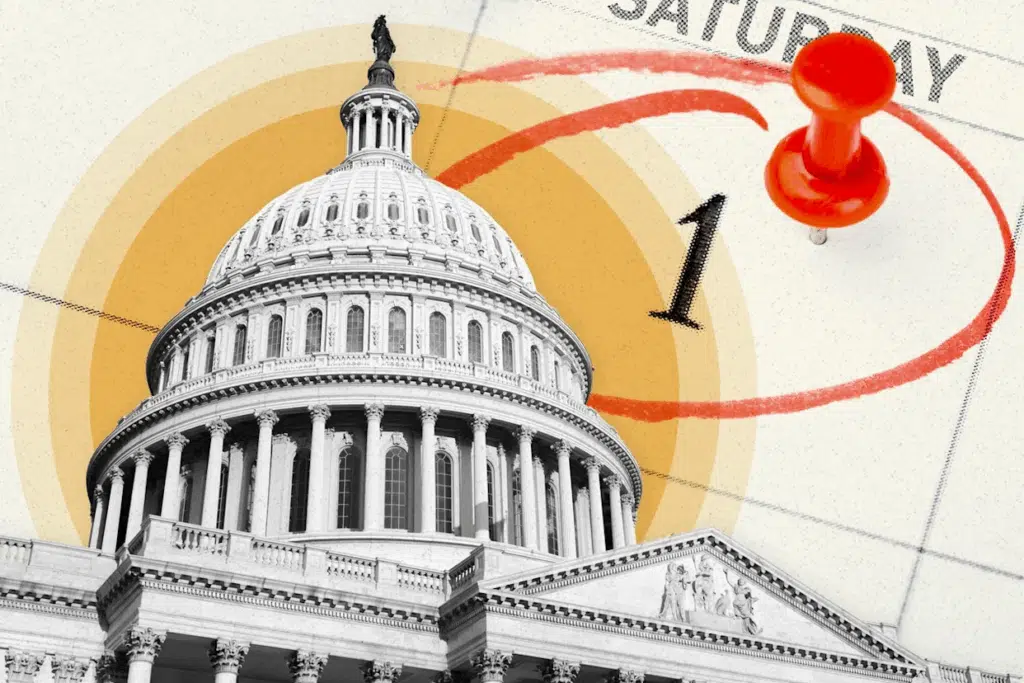
The Sky’s the Limit on Our $31.4 Trillion National Debt as Debt Ceiling Fight Looms
Reckless borrowing and spending are what got us into this fiscal mess and more of the same won’t get us out.
There is no sense in pointing fingers because both national parties have participated in the fiscal irresponsibility that has gotten us to this point.
However, now our nation’s leaders are going to have to stop kicking the can down the road and actually address this critical economic and national security issue.
Where are we?
Right now, our national debt is approximately $31.4 trillion. The interest payment alone to support this monumental debt is $400 billion annually out of the American economy. That’s merely to service the debt! None of the principal is being paid down. And this debt, which used to be justified with the feeble explanation that the debt “is just money we (U.S.) owe ourselves” is no longer true. If we stay on the path we are on now, by the early 2030s a majority of these interest payments will be annually transferred to foreign debt holders.
As E.J. Antoni at the Heritage Foundation notes, these “exploding annual deficits and debt are the direct result of runaway spending by a profligate Congress and president with no regard for Americans’ financial security.”
He makes another critical point as well—“just to emphasize that the burgeoning debt is a spending problem and not a revenue problem, tax receipts are at a record high by any measure—in nominal terms, in real terms and as a percentage of gross domestic product. The government has never collected more money, but is still managing to spend it all, and then some.” (Emphasis added).
That’s insane governmental malpractice, but that’s not all.
President Biden has demanded a “clean” debt ceiling increase with no conditions or requirements attached. That’s mind boggling. It’s also reckless and will increase, not lessen, as Biden claims, the economic pain of average Americans.
Every time we raise the debt ceiling, and an enormous gusher of new debt dollars pours into our national economy, we are increasing the level of inflation because way too many dollars are chasing way too few goods.
However, as Daniel Heninger of the Wall Street Journal notes, this time the debt ceiling debate is different.
“The pandemic put the federal government inside everyone’s head, and what the government did was spend, spend, spend, money, money, money. These spending rivers included a bipartisan Covid-relief bill of $2.2 trillion; the American Rescue Plan’s $1.9 trillion, and then a bipartisan infrastructure bill of $1 trillion. Mr. Biden’s 2023 budget proposal was for $5.7 trillion. In December he signed a $1.7 trillion spending bill.”
It’s simply an ocean of federal debt spending.
But why is this time different?
Because now, Henninger observes, “…Americans have one other mega-detail on their minds: an inflation spike that can’t be separated from the spending spike.”
Most Americans don’t want to see the credit rating—as well as our international prestige—of the U.S. downgraded or weakened by the conclusion that America is going to default on its bills and obligations. However, most Americans are suffering acutely at the gas pump, grocery store and in virtually every aspect of their lives with the governmentally self-inflicted hidden tax of inflation which has dramatically shrunk the purchasing power of their dollars.
So, if, and only if, the debt ceiling increase is agreed to, it must be linked to structural reforms which actually begin the process of reducing the national debt and the annual budget deficit so that the nation’s budget is placed on a trajectory such that in the not-too-distant future, tax revenues are balanced with spending outlays, as is the case with the budget of every American family.
These reforms should include programmatic funding cuts as well as the very reasonable capping of discretionary spending at fiscal year 2022 levels while simultaneously implementing pro-growth policies that serve to offset the debt ceiling increase. A great place to begin would be rescinding unspent Covid funds as well as the highly partisan trillion-dollar spending on Green New Deal “projects.”
What we are doing now—brazenly defying the fiscal laws of gravity—is utterly unsustainable. On a bipartisan basis, we must quickly and permanently put our nation back on a path of fiscal responsibility by shrinking the size of the federal government and fostering an environment of economic freedom and growth.



